1. The first step is to find yourself an object. I chose a rubber ducky because I wanted to make it have the opposite function it normally has i.e. it would be a sad, sinking toy.
Once you have found the object you want to cast, glue it to something sturdy, like a slab of wood, and then cover it with a thin layer of Vaseline.
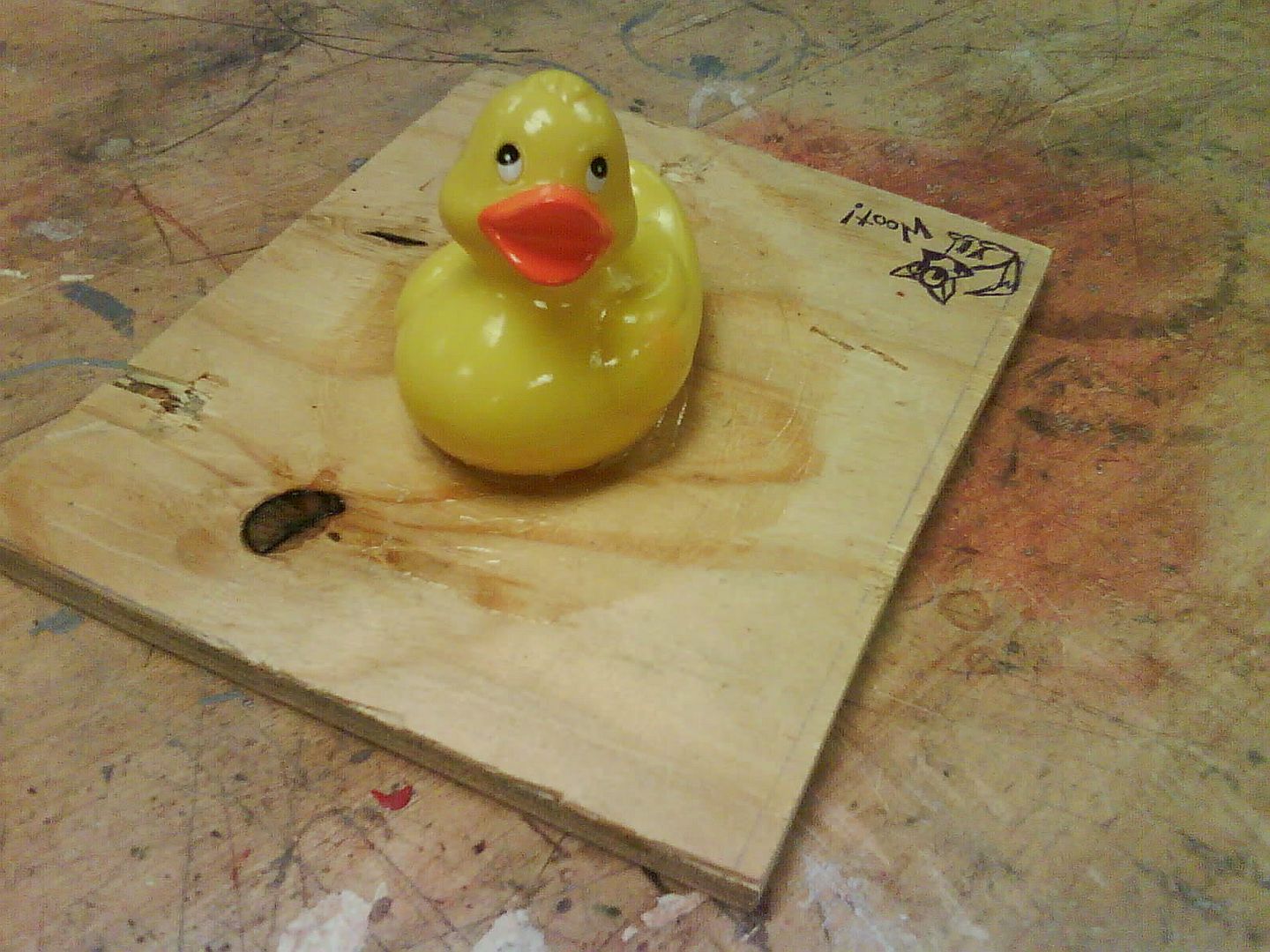
2. The next step is to mix the silicon that will soon be covering your object. You have to be pretty precise when doing this, otherwise it will harden too fast, or not harden at all.
For our silicon mixture, we used:
10 parts TINSIL 70-25 RTV SILICONE RUBBER part B
1 part TINSIL 70-25 RTV SILICONE RUBBER part A (the catalyst)
*We added a thickening agent to Part B before we added part A so the silicon wouldn't slip off of our objects. For the mixture below, only a dimesworth of thickening agent was needed.
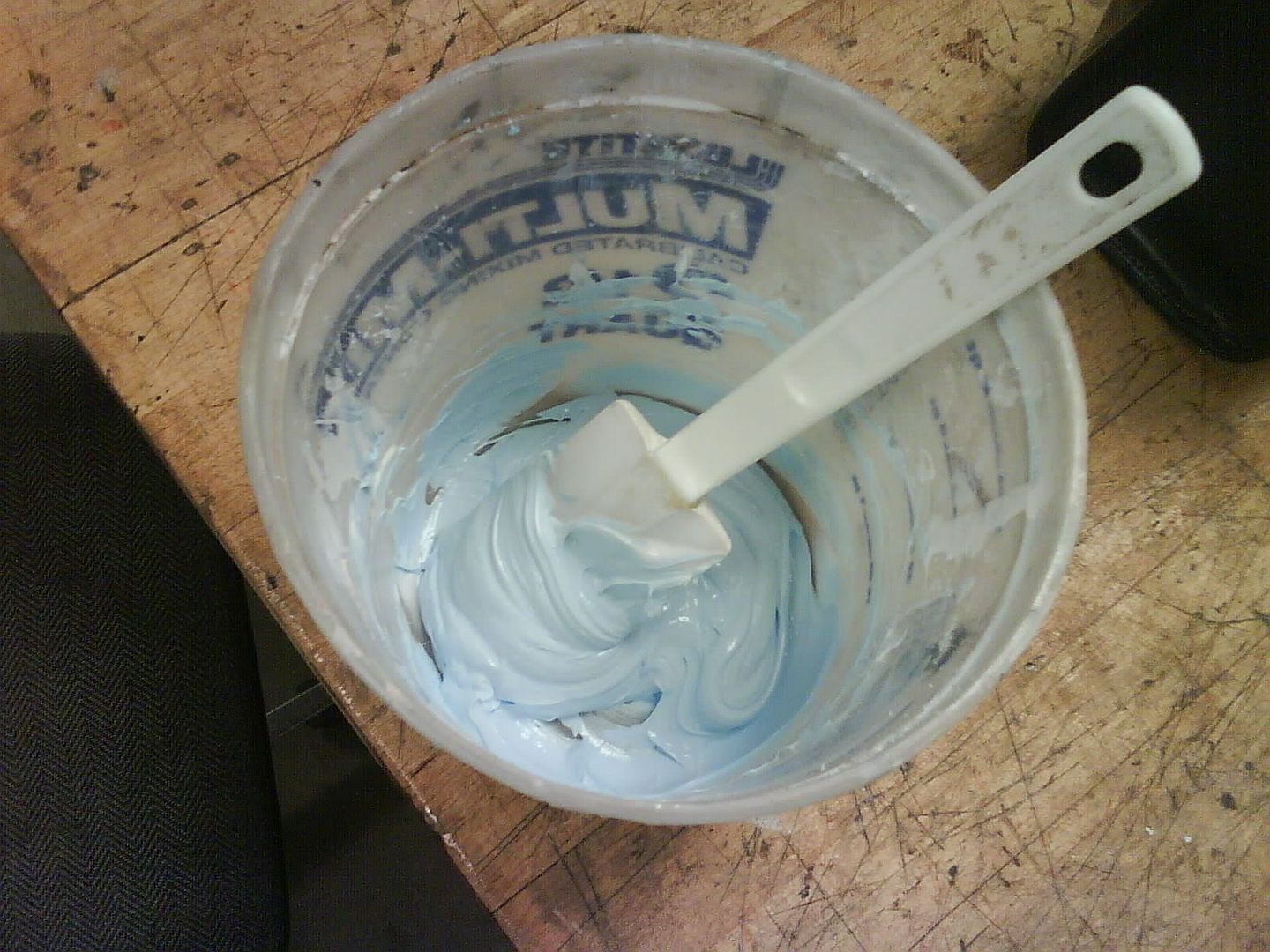
3. Once you've mixed the silicon completely, apply it to your object. Usually people use an old paint brush that they don't care about destroying, but that day we didn't have one, so we used a plastic knife I found in my backpack.
It's very important to make the walls of the silicon thick, so another layer for an object this size was necessary. After waiting 24 hours, repeat steps 2 and three to add a second coat.

4. After you've waited another 24 hours for the second coat of silicon to dry, you can begin to form the protective and preserving layer of plaster on top of the object. It's a good idea to cover half of the object with plaster, let it dry, and then move on to the second half. The reason for this is because you need to be able to easily split it apart so you can take your silicon mold out every time you fill it with material.
To separate one side from the other, we used clay.
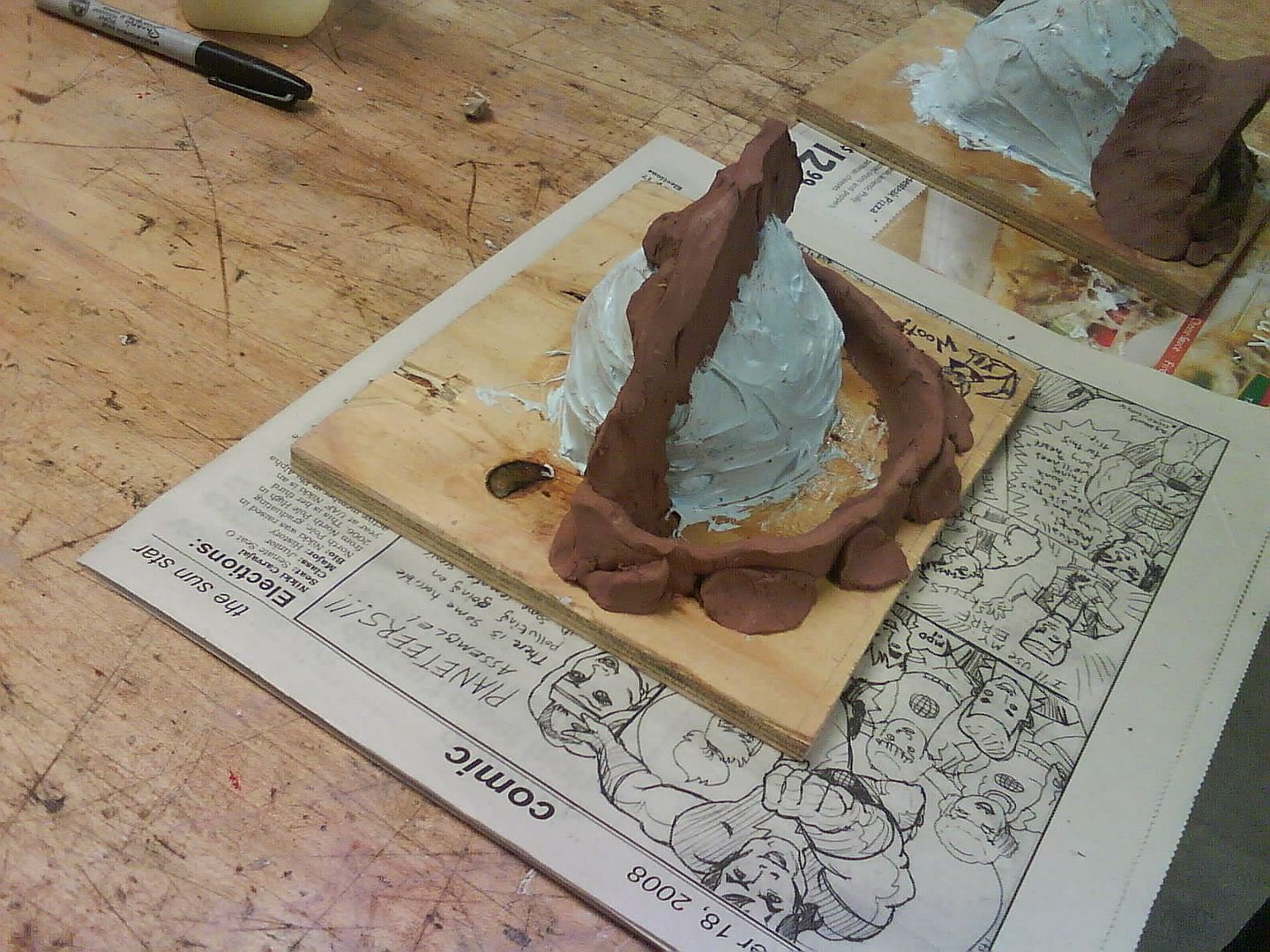
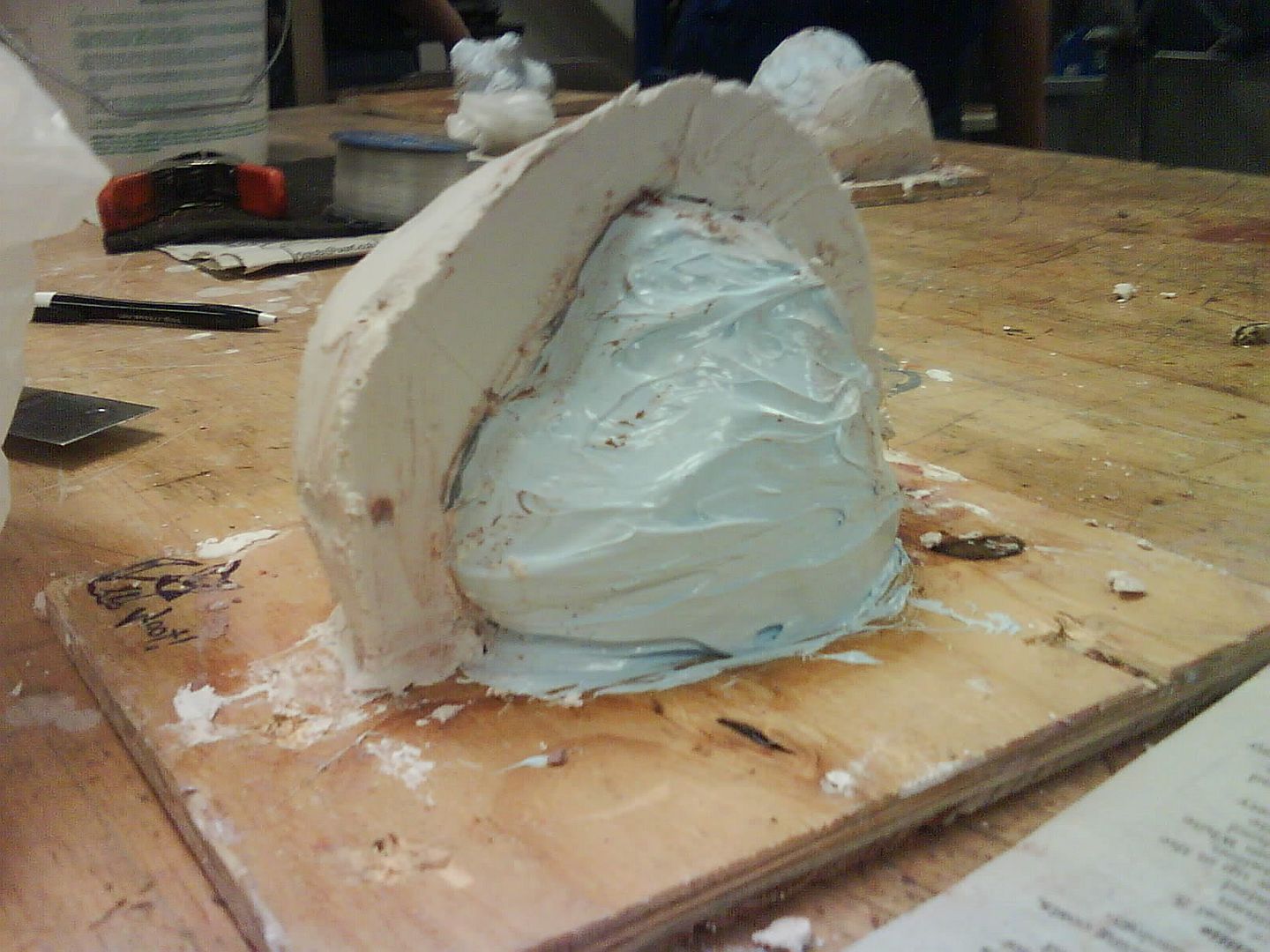
5. Once the first side dries (which usually happens in less than twenty minutes), You can begin adding plaster to the other side. When all of the plaster is completely dry, carefully separate the sides with a hammer and chisel.
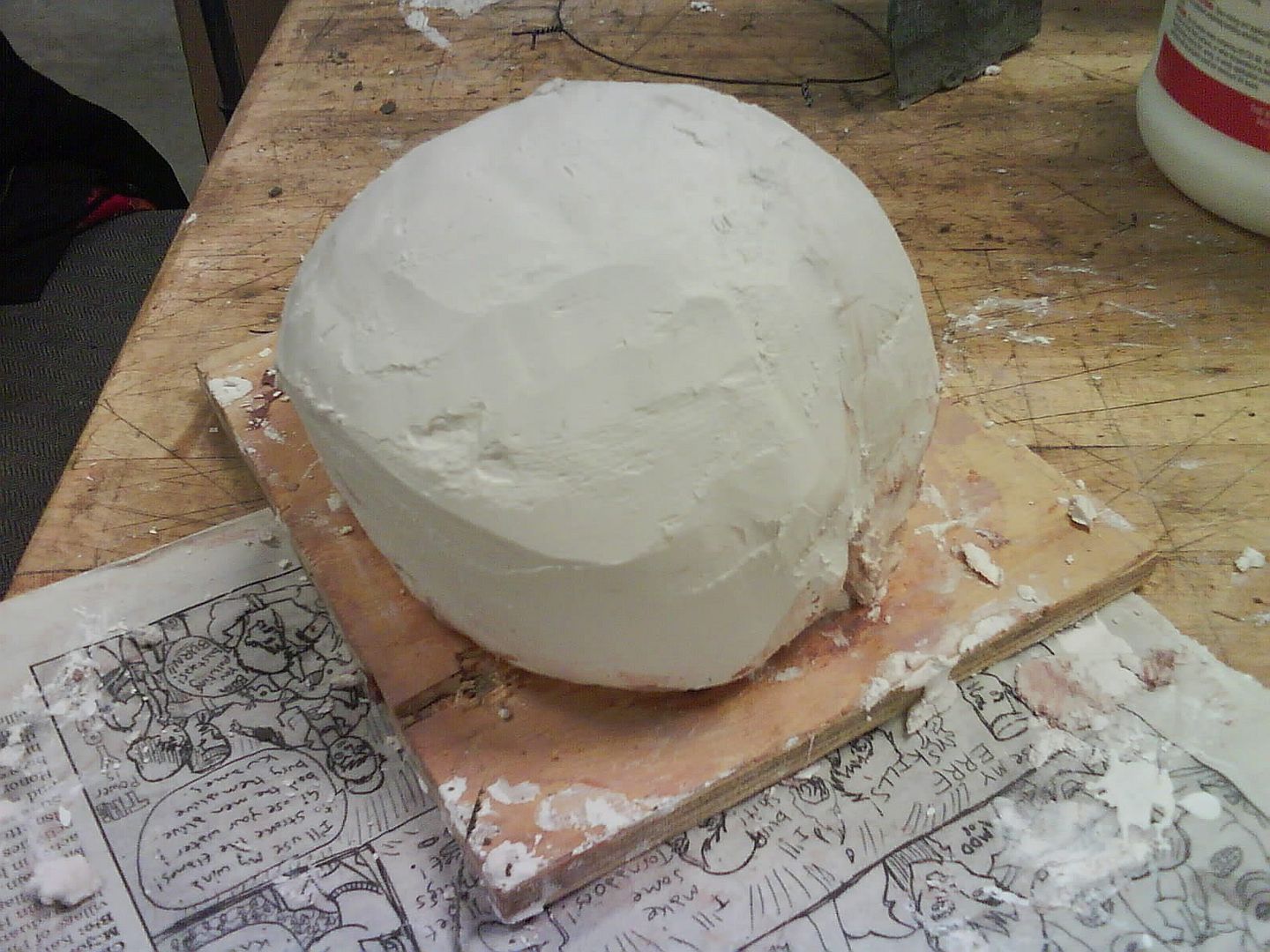
6. Now pour whatever you want into your awesome new mold (preferably something that won't damage the silicon). I used resin and cement for my ducks, but I saw others use plaster and even glue to make their objects.
*Note: You will need to use wire or a rubber band to ensure that your plaster stays together firmly. I used duct tape...and we all laughed and laughed as we called it Duck tape...
...the poorly ventilated fumes in the sculpture studio did some damage this semester...
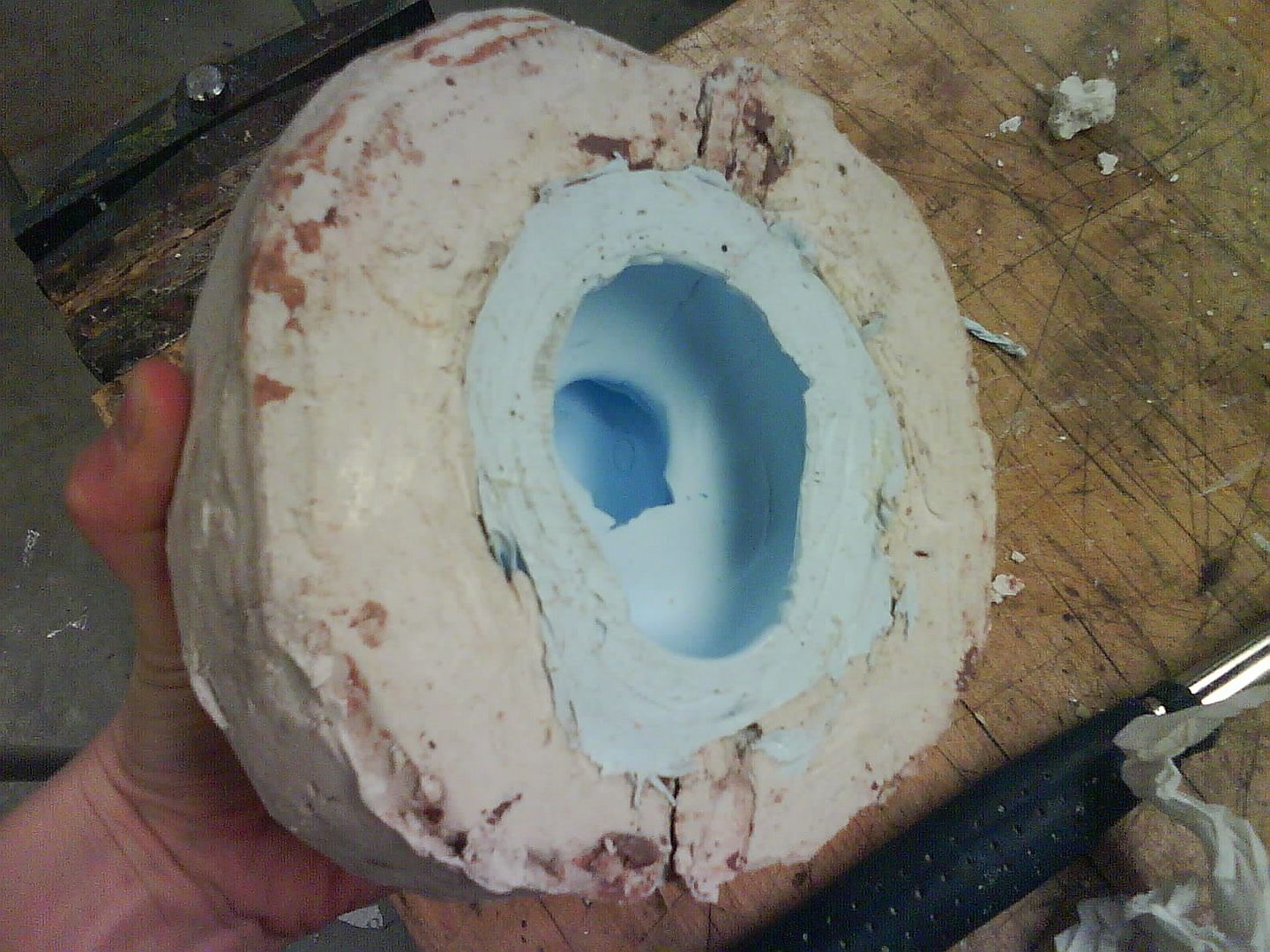
Here's a picture of the first ducky I made. It's the only resin one I have. All of the other ones I made were out of cement, which you will likely see soon :)








6 comments:
This is really interesting...at what point did you, if ever, split the actual silicon mold in half?
I see that the protective plaster comes apart, but does the silicon mold ever? Otherwise how would you remove your dried resin/glue sculpture from it?
I see that you're using rubber bands/duct tape to hold it all together and judging from your finished duckie that works just peachy. DO you think you could put water in the mold and freeze it and have an ice sculpture? Is the seal that tight? There's probably at least a little leakage. Still, looking at your finished duck clone there didn't appear to me much otherwise the duck would have a thin ridge lengthwise along the middle of his body...
Abnyway, yeah.,.. cool. w3rd.
I had to split the front of the silicon mold a bit in order to get the object out. I would wait until the material was mostly dry, take the duck out of the mold, and then smooth it wherever it was necessary.
Using water would be fine, just make sure the silicon you're using is non-toxic if you plan on ingesting the mold in any way.
Neat oh hey and where did you get the TINSIL 70-25 RTV SILICONE RUBBER in FBX?? Michael's? Or is it more of a Home Depot/Lowe's thing?
I think you have to order it online. I'm not sure they carry it in town. I'd call Home Depot or Lowe's. I know you can get the resin at Fairbanks Paint and Glass, but I don't know if they carry silicon. Please be REALLY careful when using these products.
Hey. Yeah thanks for all your help with this, it was really great, very inspiring.
Here's the thing. It turns out you can only order it online from these weird specialty shops that take 400 million years to deliver. Unfortunately, I need this rubber stuff, like...early next week. As in February 9th at the absolute latest.
Do you have any you'd be willibng to sell to me? I hate to hustle your art goods off of you but it's for a time-sensitive project and I can't seem to find any other way around it. I don't think I'd need much, probably about the same amount you used to cover the rubber duck. However much that was. Antyway, if you can't it's no harm done, this is a wild stab if there ever was one so you can email me at oscar_lockhart@yahoo.com if you have a chance to sell any of this tinsil silicon rubber honky voodoo. Thanks.
Unfortunately, I don't have any. I was taking a class that provided the materials for me.
Sorry I can't help :(
Post a Comment